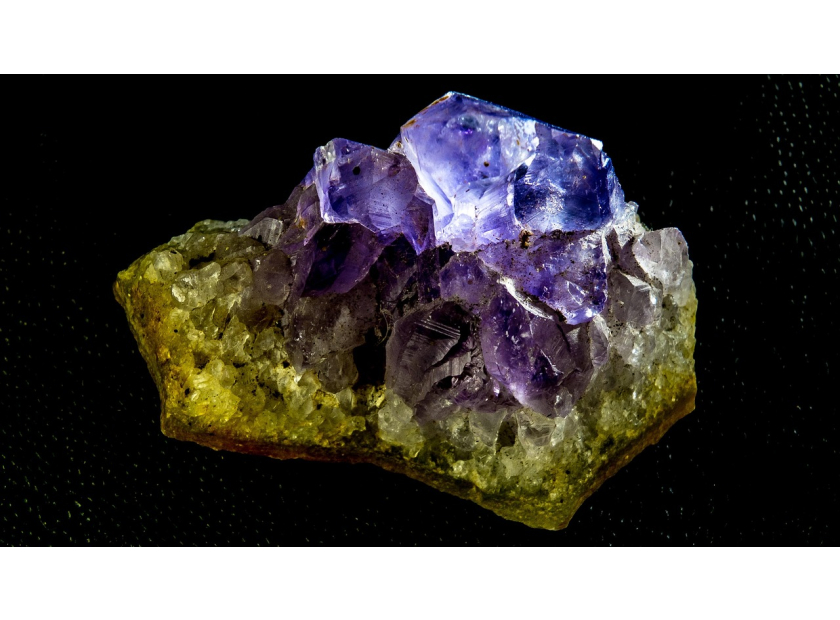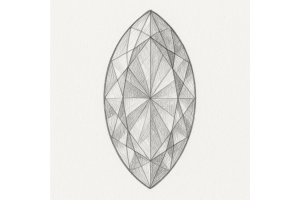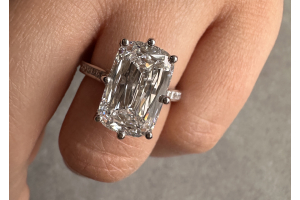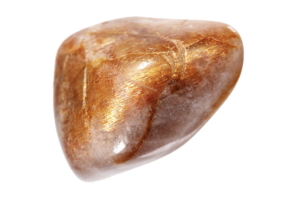GBP
/
GBP
/
Shipping to:
Currency:
What Is the Hardest Gemstone? Discover the Toughest Sparkler
When it comes to selecting the perfect gemstone for your jewellery, understanding hardness is crucial.
Hardness determines a gemstone's ability to resist scratches and everyday wear, impacting both its durability and longevity.
This guide will explore the concept of gemstone hardness, highlight the hardest natural gemstone, compare other popular stones, and provide insights into synthetic alternatives.
Understanding Gemstone Hardness
Gemstone hardness refers to a stone's resistance to scratches and abrasions.
This characteristic is vital for jewellery, as harder gemstones are less prone to surface damage.
The Mohs scale of mineral hardness, developed by Friedrich Mohs in 1812, ranks minerals from 1 (talc) to 10 (diamond) based on their scratch resistance.
It's important to note that hardness differs from toughness; while hardness measures resistance to scratches, toughness assesses a gemstone's ability to withstand fractures or chipping.
For instance, diamonds, despite their superior hardness, can still chip if struck with sufficient force.
The Hardest Natural Gemstone
Diamond tops the Mohs scale with a perfect rating of 10, making it the hardest known natural gemstone.
This exceptional hardness results from its unique atomic structure, where each carbon atom forms strong covalent bonds with four other carbon atoms in a tetrahedral arrangement, creating a robust three-dimensional network.
However, this hardness doesn't render diamonds indestructible; they possess perfect cleavage in certain directions, meaning they can split along specific planes if struck with force.
This characteristic is exploited in diamond cutting but also necessitates careful handling to avoid chipping or breaking.
How Other Gemstones Compare
While diamonds lead in hardness, other gemstones also offer notable durability:
- Corundum (Sapphires and Rubies): Ranking at 9 on the Mohs scale, corundum varieties are highly durable and suitable for everyday wear. Their hardness makes them resistant to scratches, though they are still softer than diamonds. For those interested in vibrant and unique designs, check out gemstone engagement rings.
- Topaz: With a Mohs hardness of 8, topaz is relatively hard but more susceptible to scratching than corundum. It's advisable to store topaz jewellery separately to prevent contact with harder materials. If you're considering topaz or other gemstone rings, explore our collection of gemstone rings.
- Quartz (Amethyst, Citrine): Quartz varieties have a hardness of 7, making them moderately durable. They can be scratched by any material harder than themselves, so some care is needed during wear.
- Feldspar (Moonstone, Labradorite): These gems fall between 6 and 6.5 on the Mohs scale, indicating a lower resistance to scratches. They require more cautious handling and are best suited for jewellery like earrings or pendants that are less exposed to knocks.
Synthetic Alternatives and Their Hardness
Advancements in technology have led to the creation of synthetic gemstones that rival natural ones in hardness.
For instance, moissanite, a lab-created silicon carbide, boasts a Mohs hardness of approximately 9.25, making it a popular diamond alternative due to its brilliance and durability.
Additionally, lab-grown diamonds, produced through high-pressure high-temperature (HPHT) or chemical vapour deposition (CVD) methods, possess the same hardness as natural diamonds.
These lab-grown diamonds are used both in jewellery and various industrial applications.
To understand the differences between lab-grown diamonds and natural gemstones, you might find our guide on lab-grown diamonds vs gemstones helpful.
Testing Gemstone Hardness
Determining a gemstone's hardness typically involves scratch tests, where the stone is scratched with a reference material of known hardness.
However, such tests can damage the gemstone and are generally not recommended for finished jewellery pieces.
Professional gemologists employ non-destructive methods, such as observing inclusions, refractive indices, and other optical properties, to assess a gemstone's identity and characteristics without causing harm.
Myths About Gemstone Hardness
- Hardness Equals Toughness: A gemstone can be hard (resistant to scratches) but not tough (resistant to breaking). Diamonds are a prime example of this distinction.
- All Diamonds Are Equally Hard: While diamonds are the hardest natural material, variations in their crystal structure and purity can lead to slight differences in hardness. Some synthetic diamonds have been engineered to be even harder than natural ones.
- Hardness Prevents All Damage: Even the hardest gemstones can suffer damage from sharp blows, extreme temperatures, or improper settings. Proper care and handling are essential to maintain their integrity.
Choosing the Right Gemstone for Your Needs
- Purpose: For everyday jewellery like engagement rings, opt for harder gemstones such as diamonds or sapphires that can withstand daily wear. If you're looking for something unique, explore our non-traditional engagement rings.
- Setting: Protective settings, like bezel settings, can help shield softer gemstones from potential damage.
- Maintenance: Regular cleaning and proper storage can prolong the life and appearance of your gemstone jewellery. Store pieces separately to prevent harder stones from scratching softer ones.
Frequently Asked Questions
Can a diamond break if dropped?
Yes, despite their hardness, diamonds can chip or break if struck with sufficient force, especially along their cleavage planes.
Are synthetic diamonds as hard as natural diamonds?
Yes, lab-grown diamonds have the same atomic structure as natural diamonds and are equally hard.
What gemstone is hardest after diamond?
Corundum, which includes rubies and sapphires, ranks just below diamonds with a hardness of 9 on the Mohs scale.
Is it okay to wear softer gemstones daily?
You can, but softer stones like moonstone or opal need extra care and should be worn in settings that protect them from knocks and scratches.
How can I tell if a gemstone is hard or soft?
The best way is to check its Mohs rating, but a professional jeweller can also help you identify and understand a gem’s properties without damaging it.








